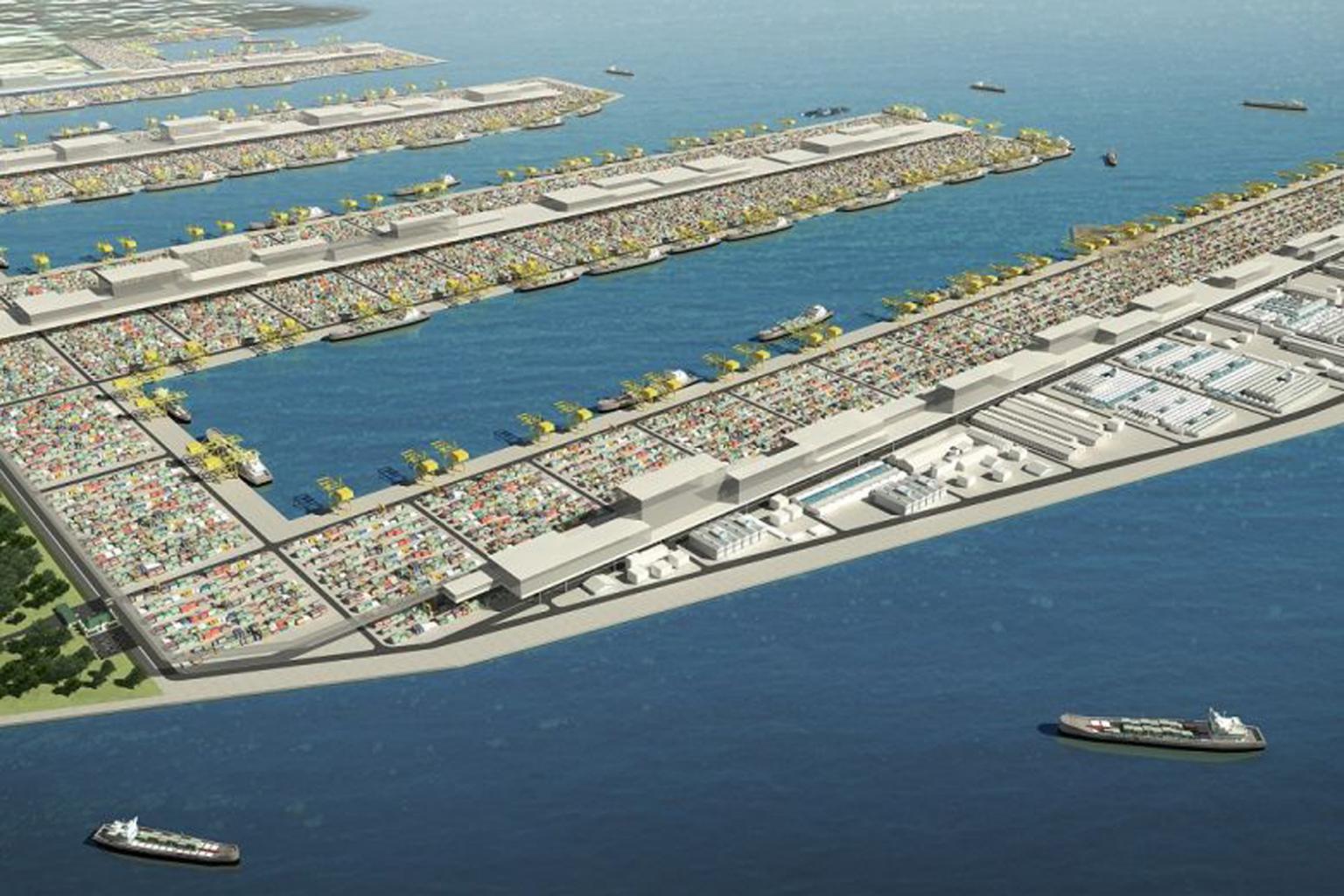Singapore plans to keep port attractive
Sign up now: Get ST's newsletters delivered to your inbox

An artist’s impression of the Tuas mega port. Minister of State for Foreign Affairs Sam Tan cited Singapore's investment of billions of dollars in the new Tuas mega port as a strategy to safeguard the Republic's maritime industry.
PHOTO: MARITIME AND PORT AUTHORITY OF SINGAPORE
Follow topic:
TROMSO (Norway) • Singapore plans to keep its port operations cheaper, faster and better so its maritime trade continues to thrive, even if global warming causes an alternative trade route to open up in the Arctic Ocean.
"We have to make sure that our port provides the most efficient, cost-effective services to shipping companies. So even with reduced shipping activities, there will still be a sizeable number of ships calling at our port," said Minister of State for Foreign Affairs Sam Tan.
Speaking to The Straits Times on the sidelines of a conference on arctic issues in Tromso, Norway, on Monday, he cited Singapore's investment of billions of dollars in the new Tuas mega port as a strategy to safeguard the Republic's maritime industry, which accounts for 7 per cent of gross domestic product.
The Tuas project will increase Singapore's port capacity to 65 million TEUs (twenty-foot equivalent units) of cargo, more than double what the port handled in 2016.
The project will consolidate all of Singapore's port operations in Tuas and open from 2021.
Global warming is causing sea ice in the Arctic to melt, opening up the Northern Sea Route to ships.
This is a passageway that will shave 30 per cent off travel time via the conventional Suez Canal-Malacca Strait option. While it is now open for only a few months during the summer, accelerating rates of melting sea ice could make this route viable all year round.
Mr Tan said such developments may not pose immediate threats. But Singapore is taking a long-term view on arctic developments - whether it is the opening up of new trade routes or rising sea levels caused by melting glaciers, he added.
To prepare for the rise in sea levels, for instance, the authorities in 2011 raised the minimum reclamation level to at least 4m above mean sea level - an increase of 1m.
Mr Tan said: "We have to prepare ourselves... if we don't do anything, when the new water channels open up and sea levels rise, we will be caught flat-footed."
But there are opportunities to be reaped as well. Singapore's Keppel Corp, for example, has built rigs and ships for customers operating in the Arctic.
Mr Aziz Merchant, executive director of the marine and deepwater technology division of Keppel Offshore and Marine, said he saw opportunities in building search and rescue facilities, ice-class vessels and tourism infrastructure.
On the need for search and rescue facilities, Mr Merchant, who also attended the Arctic Frontiers conference, said: "With increased activity in the Arctic region, there is a rising need to enhance search and rescue operations there."

